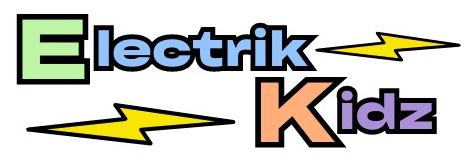
Are you looking for strategies to promote handwriting readiness in your students? Handwriting is an essential skill that our children must master, as it supports academic success and self-confidence. Fortunately, several simple activities and tips can encourage handwriting development. With the right approach and support, children can gain greater confidence in their writing abilities—and even learn to enjoy it!
Are you looking for a fun and educational way to help your child prepare for writing?
Electrikkidz Shop has the perfect solution! Our handwriting readiness products encourage children to learn important skills such as pencil grip, letter formation, etc. Through using play-based activities and engaging digital lessons, our program helps kids acquire the basics of handwriting while having fun at the same time.
Electrikkidz provides an innovative way to prepare your child for one of the most important academic concepts they will ever learn – how to write! Our products were carefully designed by experts in early learning experiences who understand what it takes to teach this fundamental skill effectively.
Take advantage of this amazing opportunity to greatly benefit your little learner – check out Elektrikkids’s Handwriting Readiness Products today!
Understanding the fundamentals of handwriting readiness
As parents or teachers, we want our children to succeed in every aspect of their lives, including handwriting skills. Handwriting readiness is the foundation on which a child’s writing abilities are built. But what exactly does it mean to be “ready” for handwriting?
It involves the development of:
- Fine motor skills.
- Hand-eye coordination.
- Cognitive skills such as visual perception and memory.
By understanding these fundamentals, we can create activities and exercises to help our children develop the necessary skills for neat and legible handwriting.
Strategies for helping children develop the skills needed to excel at handwriting
Fortunately, many effective strategies can be used to help children develop essential skills for writing. For starters, encouraging plenty of practice is key. It’s important to ensure that children use the correct grip and posture, as this will help them write more efficiently and with less strain.
Simple and age-appropriate activities for building fine motor coordination

Fine motor coordination is an essential skill that helps children perform various activities such as writing, drawing, tying shoelaces, and more. Therefore, it is crucial to help children develop their fine motor skills early. Simple and age-appropriate activities can play a significant role in building fine motor coordination in children. Some easy activities that you can try with your child include:
Playing with playdough
Playdough helps children build strength in their hands and fingers. Make sure to provide plenty of modeling tools for them to manipulate the dough, such as cookie cutters, rolling pins, and scissors.
Using tweezers to pick up small objects
This activity stimulates the pincer grasp, an important handwriting development skill. Use different objects such as cotton balls, paper clips, or bamboo sticks with the tweezers.
Threading beads or pasta pieces
This activity helps children improve their coordination and agility as they thread the beads. It can also help with the development of the tripod grip.
My Busy Book (Writing for Beginners)
My Busy Book is the perfect tool to help children learn to handwrite. This interactive book contains various activities that support and reinforce the development of writing skills. It includes tracing activities, coloring images and shapes, and much more!
Cutting with scissors
Cutting with scissors is also a great way to improve hand-eye coordination and fine motor skills. Ensure that the scissors are age-appropriate, as this can help them learn the correct way of cutting.
These activities are fun for children and help them develop crucial fine motor skills they will need later in life.
Encouraging Positive Reinforcement when Practicing Handwriting
When it comes to practicing handwriting, positive reinforcement can be a game-changer. Instead of focusing on the mistakes or errors that might arise during practice, it’s important to highlight what’s going well. Doing so can help your child or student feel more confident and motivated to continue improving their skills.
Whether through verbal praise or other forms of recognition, positive reinforcement can be a powerful tool for encouraging progress.
Frequently Asked Questions About Promoting Handwriting Readiness
Q: What should I do if my child struggles with handwriting?
A: Start by evaluating whether they have the necessary fine motor skills and physical stamina for writing. If needed, you can also consult an occupational therapist or other specialist.
Q: How often should I have my child practice handwriting?
A: The frequency of practice ultimately depends on your child’s development and needs. You can start slowly with short sessions a few times weekly, then gradually increase the duration and frequency.
Q: What are some activities I can do to help my child practice handwriting?
A: You can use various activities and strategies to help your child practice handwriting. These include using My Busy Book, playing with playdough, threading beads or pasta pieces, practicing pencil grip exercises, and more!
Final Thoughts
Promoting handwriting readiness is an essential part of any child’s development. Teaching children the proper techniques and providing them with the environment to explore and practice these skills result in positive reinforcement and encourage progress. It takes time, patience, and creativity to help facilitate success in this stage of pencil grip skills, letter formation, knowledge of basic words, and more.
Fortunately, Electrikkidz Shop is here to help make the journey smoother. Our Handwriting Readiness Products encourage children to learn fundamental skills. Don’t miss this amazing opportunity – check out Elektrikkids’s Handwriting Readiness Products today!
Subscribe to our email newsletter to get the latest posts delivered right to your email.

Comments